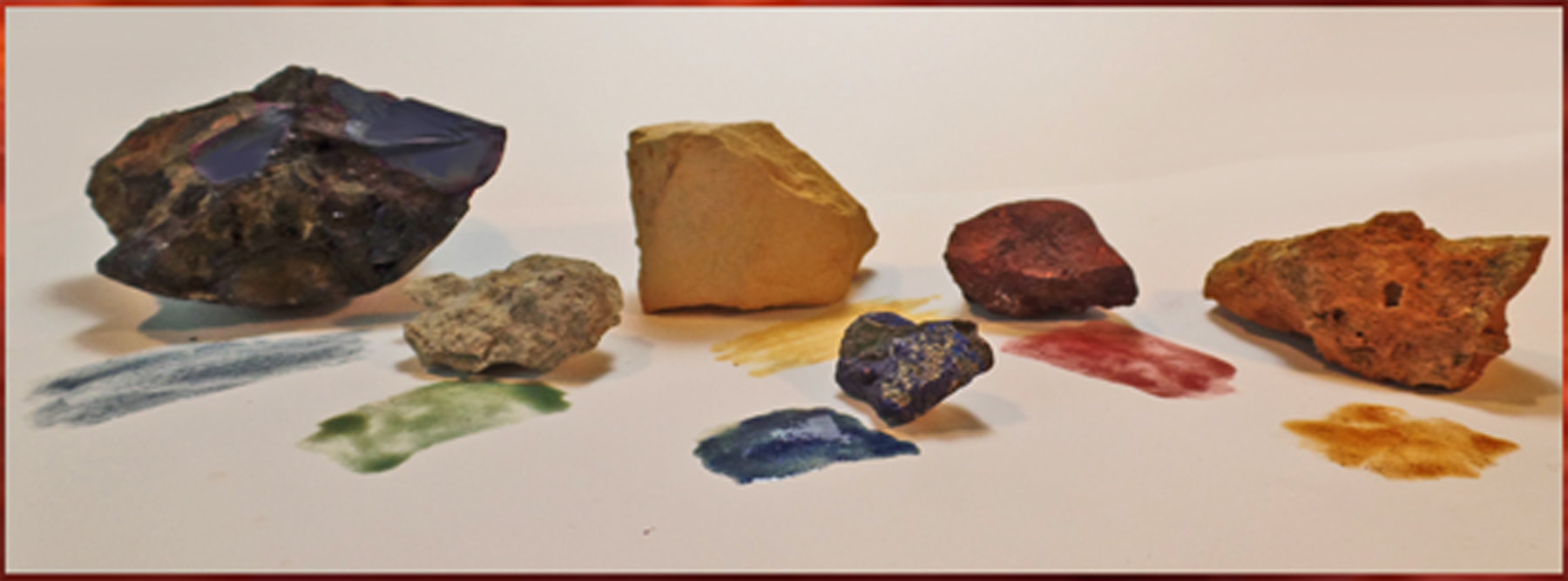Pigments vs Dyes
Before the availability of commercial pigments and paints, NW Coast artists obtained their paint-making materials from the environment. Mineral pigments, found as stone, clay and earth are the primary materials necessary for the color and substance of paint. Black paint was also made from burnt bones, charred woods, and white was made from certain types of shells.
Pigments are different from dyes; they are insoluble in natural solutions and remain particulate in a suspension with a binding agent. This forms a film on the surface of the object to which the paint is applied creating a physical bond between the paint and the surface.
Dyes on the other hand, are made from vegetable or animal matter (such as dyes obtained from certain species of marine snails). Their particulates dissolve in solution coloring the liquid in which they are placed. Dyes soak into the object, whether it’s fiber, wood, or leather, staining it but leaving no surface film.
While pigments are typically waterproof (depending on the binder) and lightfast, dyes wash out and fade unless hard set with a mordant. When a dye is applied to wood it simply stains it and can be soaked off. On the NW Coast dyes were not typically used on leather or wood objects.

